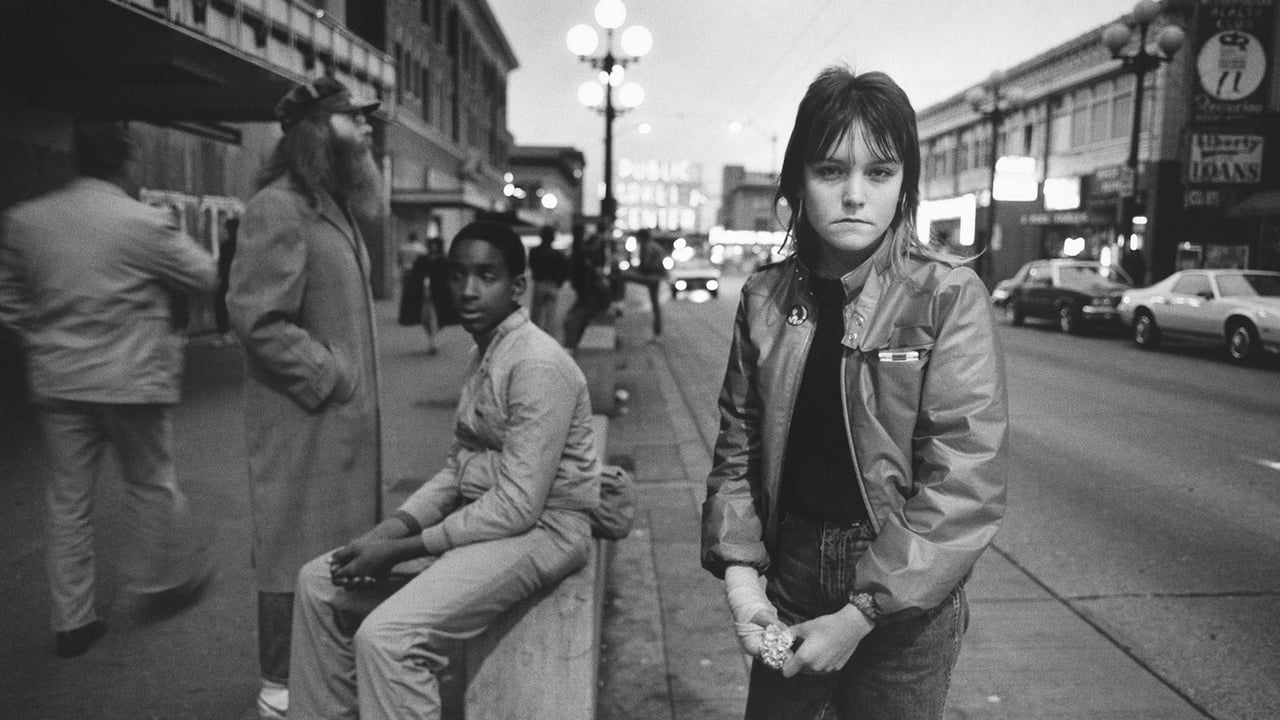

It's a documentary of a bunch of street kids in Seattle. Rat is doing and selling drugs. He's friend with older Jack and living in an abandoned building. He'd take his gun to "roll a queer" and dumpster dive. Tiny is a 14 year old prostitute who won't consider abortions and lives in a dysfunctional family with her mom and stepfather. DeWayne is a panhanding and thieving hustler. He hangs himself in the end.It's an amazing insightful documentary. It's praise worthy for director Martin Bell, his wife photographer Mary Ellen Mark and the Life Magazine article writer Cheryl McCall. They really got the trust from these kids and get right inside in their lives. It would be helpful if they include the kids' name in caption as well as their ages. Their ages are really shocking and it would have been more compelling to see it shown in bold block letters.
... View MoreI was not in the movie but I was there I lived it. Me "Lil Kelly" and my sis Cheryl were joined together at the hip runnin hard. This was our life I didn't know that Roberta had even died until Gary Ridgeway was convicted and her name was read as one of his victims. I have a picture of Bert when we were down on first and pike I will always remember her that way young, blonde, beautiful and full of life. And Lulu how can anyone forget her! My first day downtown someone told me she was a girl not knowing any better I said quite loudly B.S. that's a dude! Well she overheard me ran up to me and lifted up her shirt and say's does this look like a man B**** Well she scared the hell outa me almost made me want to runaway back home!!LOL and Patty well she was a whole story in herself I remember her sitting on "her" garbage can down on Penny's Corner waiting for dates. And Dewayne my "lil man" he always wanted to run away with me and take care of me. Still to this day 20+ years later I cry what a sad tragedy! Why Baby why did you have to leave us like that??? There were people who loved you my "lil man" we did we all did we, us all of us the street kids your family. You have been greatly missed baby and thought of often. And Kim my sis who I wish Cheryl and I could find if anyone knows where she is please e-mail me! Kimmy you were in our lives for so many years the last time we saw you was about 13 years ago with Boxcar! Anyways anyone from block out there please write I always have wondered where everyone went or if there is anyone left. [email protected] Lil Kelly
... View MoreI just saw this at a film festival in NY with the director present to answer questions plus the follow up mini movie on tiny and her life now.. yes she has 9 kids not all from different fathers just 3 are. She is married and lives with her husband and children she still smokes like a chimney and made some bad decisions while pregnant(such as doing drugs and drinking). The director told us that most of the kids were killed or died from AIDS and that Roberta Hayes was a victim of the green river killer. He said that rat was driving a truck at night after doing a lot of time in prison. The saddest thing about this was those that did survive went on to live terrible lives and have children who unfortunately followed in their footsteps.
... View MoreI have followed (or tried to follow) Tiny through the years, she is up to 9 children now and is moving to North Carolina with her husband. He is the father of her last 4 kids. Her oldest son Daylon lives alone and is 19, her 2 oldest daughters live with a relative. Here is the link to http://seattletimes.nwsource.comtype in Mary Ellen Mark, the article is called: Focused on a life: Photographer uses camera as force for changeI heard that Rat is living on a farm or ranch, , some people say he died, does anyone have any current info?Does anyone have a picture of Roberta, the victim of the Green River killer? I cannot remember her face.
... View More